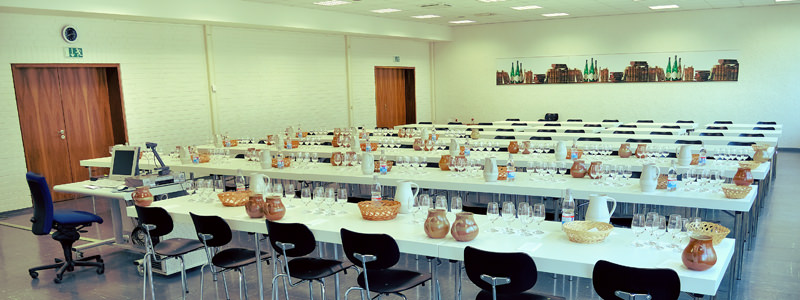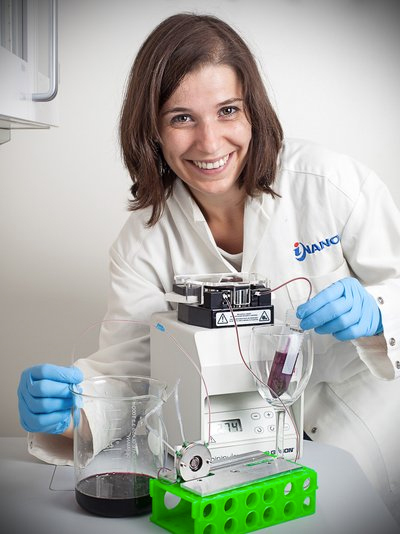
Wine reviews, despite the 100-point scoring system popularized by Robert Parker, aren’t exactly scientific. Or objective. Not that they claim to be. But a numerical scoring system certainly gives the impression of precision and consistency, if not objectivity (the bump to 100 points over the British style 20-point rating system reinforces that impression for many, whether the motivation was intentional or not).
Questions like these are at the heart of the odd relationship between science and wine. We’ll leave open the question of the merits of numerical rating systems for another day (though we do encourage you to try our game which challenges you to tell the difference between quotes from Robert Parker and a robot). It all may be moot someday anyway. Enter the LSPR Multifunctional Biosensor:
Researchers at the Interdisciplinary Nanoscience Centre (iNANO ), Aarhus University, have now developed a nanosensor that is capable of measuring the effect of astringency in your mouth when you drink wine. To put it simply, the sensor is a kind of mini-mouth that uses salivary proteins to measure the sensation that occurs in your mouth when you drink wine. The researchers are looking at how the proteins change in the interaction with the wine, and they can use this to describe the effect of the wine.

The research term, led by PhD student Joana Guerreiro, has been modest about the impact their research might have on wine criticism, instead shifting the value back to wine producers. Still, if you read between the lines, the role it could play in evaluating wine is clear:
“We don’t want to replace the wine taster. We just want a tool that is useful in wine production. When you produce wine, you know that the finished product should have a distinct taste with a certain level of astringency. If it doesn’t work, people won’t drink the wine,” says PhD student Joana Guerreiro, first author of the scientific article in ACS NANO, which presents the sensor and its prospects.
There are many different elements in wine that create astringency, and this makes it difficult to measure because there are so many parameters. The sensor turns this upside down by measuring the molecules in your mouth instead.
“The sensor expands our understanding of the concept of astringency. The sensation arises because of the interaction between small organic molecules in the wine and proteins in your mouth. This interaction gets the proteins to change their structure and clump together. Until now, the focus has been on the clumping together that takes place fairly late in the process. With the sensor, we’ve developed a method that mimics the binding and change in the structure of the proteins, i.e. the early part of the process. It’s a more sensitive method, and it reproduces the effect of the astringency better,” says Joana Guerreiro.
Read more at Aarhus University’s website, or check out the actual research paper at ACS NANO.
Header image via Shutterstock.com
